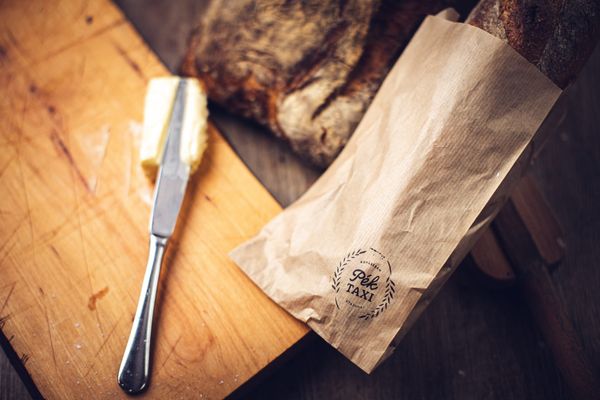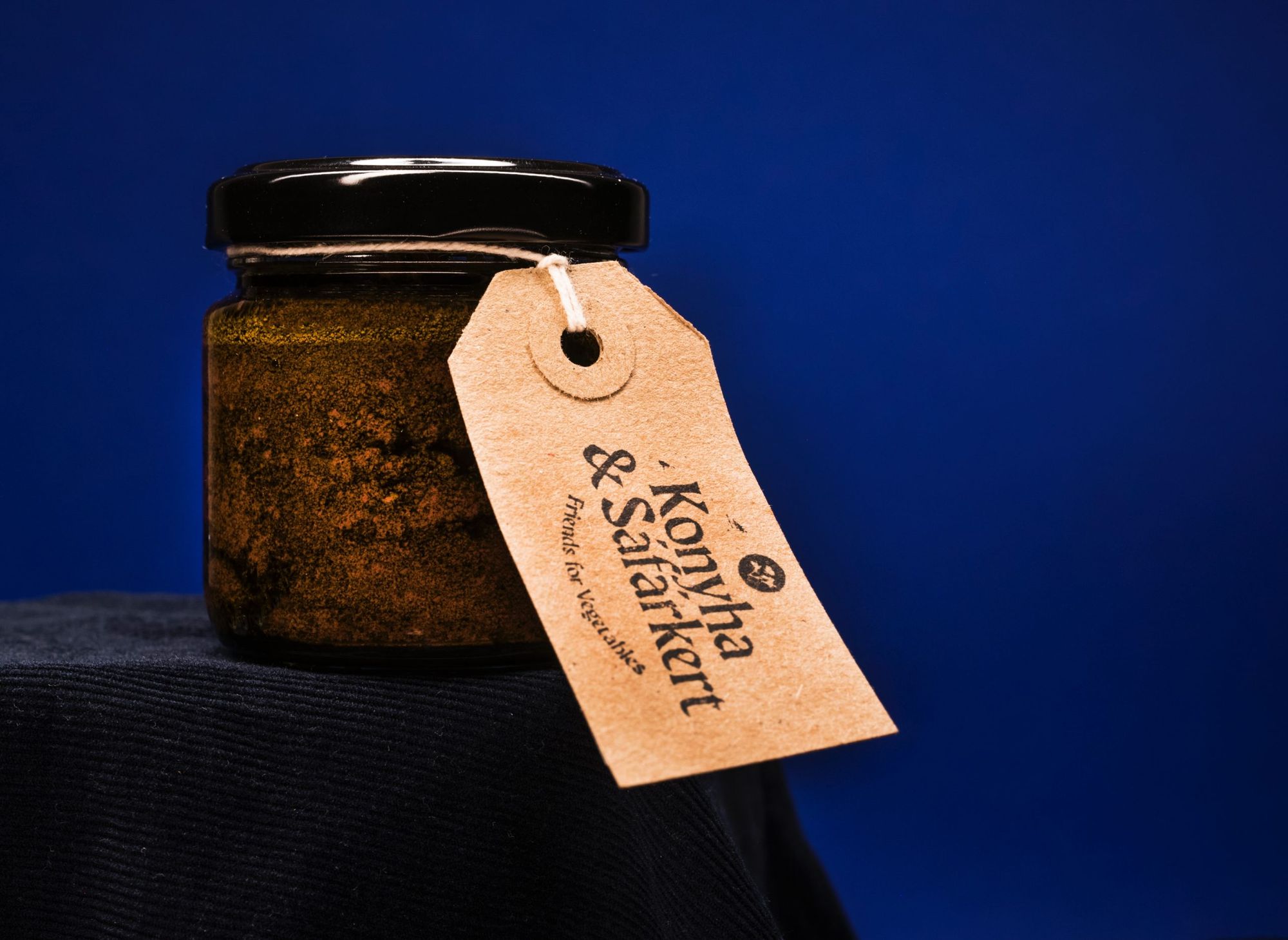How can summer sunshine be “preserved” for cold winter days? The more fortunate ones already know, as they can still remember the abundance of compotes, jams and pickles lined up on the pantry shelves back in their childhood. Preserving the flavors of nature is an honorable tradition of ours, but it’s even more exciting when someone turns to all this with a bold, groundbreaking curiosity and humbleness at the same time – and the joint project of Sáfárkert and Konyha is a textbook example of the latter.
Written by: Bianka Geiger

Sáfárkert has been making available great quality Hungarian produce to everyone in the country since 1983 – Norbert Sáfár picked up the mantle from his mother, the founder of the farm, in 1994. They are known for their juicy tomatoes produced in a rainbow of colors and crisp greens – those who become a member of the box community can be sure that they will get vegetables rich in vitamins and flavors every week. This was one of Sáfárkert’s innovations a few years ago: instead of delivering to farmers’ markets, they decided to bring the produce straight to the tables of customers.
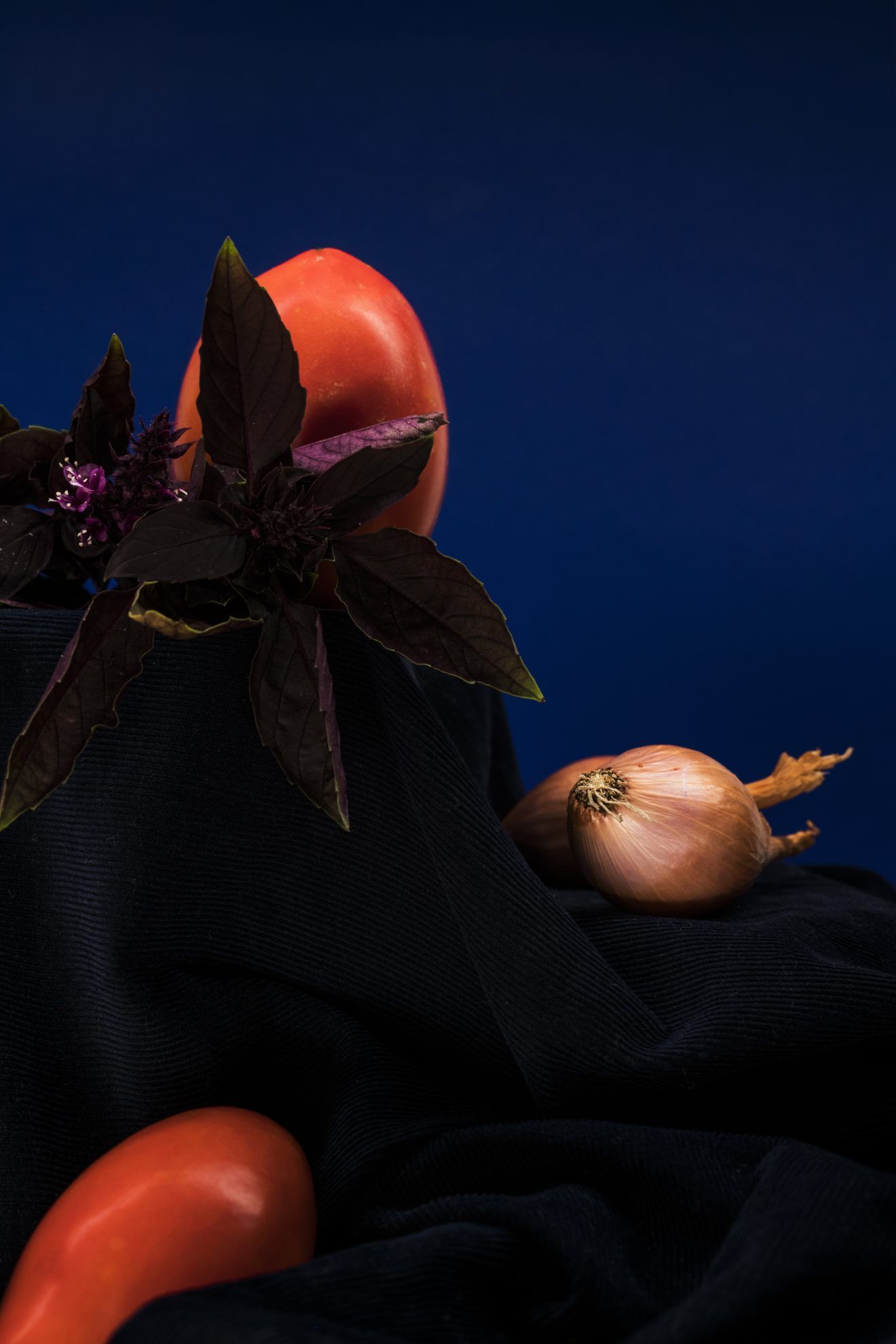
This of course went hand in hand with a certain level of vulnerability, as if weather or other factors are not optimal, it will affect the plants and via them, the customers, while at other times it is the sudden accumulation of produce that poses problems. They needed something to get round the problem – this is when chef Márton Keve and Konyha, one of the hot spots of Madách tér came into the picture. Marci started working in Konyha with many years of fine dining experience behind his back – he staged in several restaurants in Spain, London, and even Noma in Copenhagen. He and Norbi met through a mutual friend, and found common grounds instantly: exploring and preserving the values of nature is extremely important to both of them, and so is the desire to explore and introduce the flavors of known and unknown vegetables and fruits. Indeed, a sunlit tomato is not simply tasty, but much more than that: it is honey-sweet, slightly sour and the more ripe it is, the more umami can be tasted in it, which is considered to be the fifth basic flavor (with the compound called glutamine behind it, which could sound and taste familiar from mushrooms, algae or aged cheese and meat – the Ed.).
The goal was to create products that meet the requirements of vegan kitchen – on the one hand, Norbi is a vegetarian, and both of them agree that this is where the world is heading –, and that generate as little waste as possible. Marci has always liked the simple yet detailed attitude of Asian cuisine, and was already familiar with the technological methods with which the entirety of ingredients can be used, while also preserving the aroma of the produce. In addition to top quality vegetables, the key is in waiting patiently and maintaining the right temperature, allowing the flavors not only to freeze into eternity, but also to transform and concentrate. This is more like chemistry or a practical production method than abstract culinary art, although the result undoubtedly forces the taster out of their comfort zones.
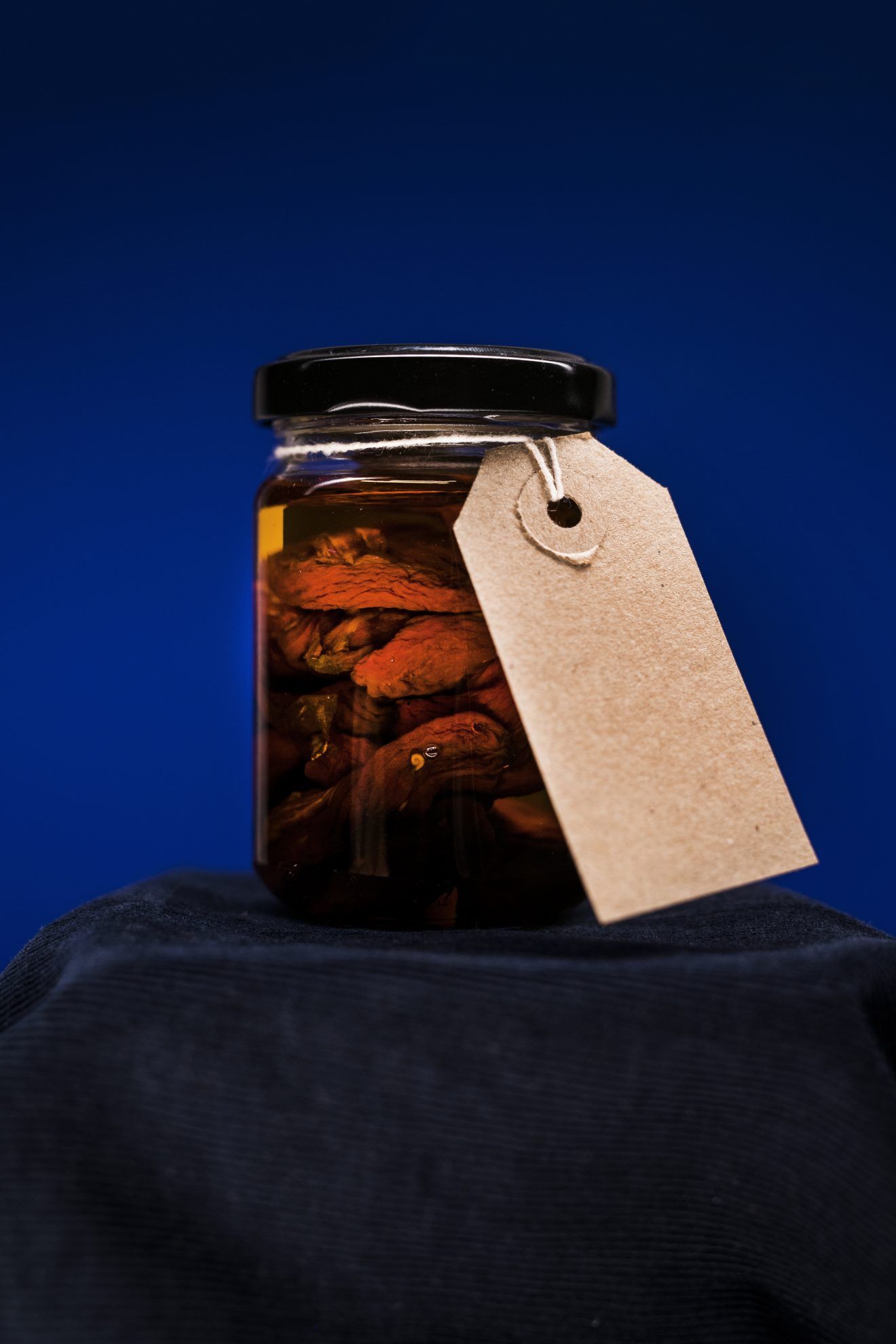
The first product they co-created was the smoked tomato. This year, tomato season was very fruitful in Sáfárkert, and the chef realized that the San Marzano type rich in glutamine is a perfect candidate for lengthy drying. He also added a twist to the process: before they were placed on the trays, he blanched the tomatoes (that is, he dipped them into hot water for a few minutes then directly into cold water – the Ed.) and also smoked them on their own leaves. This way, a true avalanche of flavors was put into the jars, which is the perfect accessory of the simplest sandwich on the one hand, and shows how much potential vegetarian dishes can offer, on the other hand. This was followed by Parmite, inspired by Marmite popular in English cuisine (a spread made of yeast). He broiled the remaining tomato juice (exactly 160 liters) until it was reduced to 2 liters. As Marci puts it, the result is the “essence of the spirit of tomato”, a concentrate, only a few drops of which can season any food composition as a special ingredient.
Their purple basil pesto and kombucha have similar two-fold stories – in the former, the basil leaves were gently heat-treated, then suddenly frozen, and only then grounded. Then the product was harmonized with black garlic and smoked walnut, thus both the colors and the flavors became incredibly full. Kombucha is a fermented beverage (fermentation is what takes places for example when making sour cabbage, too – the Ed.), marrying basil leaves in filtered water with brown sugar and SCOBY, a natural bacterial culture, which ignites the fermentation process. Of course those looking for more traditional flavors won’t remain hungry either, as their selection also offers shallot jam and habanero ketchup. The photo series made by Géza Talabér forms a synergy with the “power” of the products – his photos create a deep context making the jars looking almost like artworks.
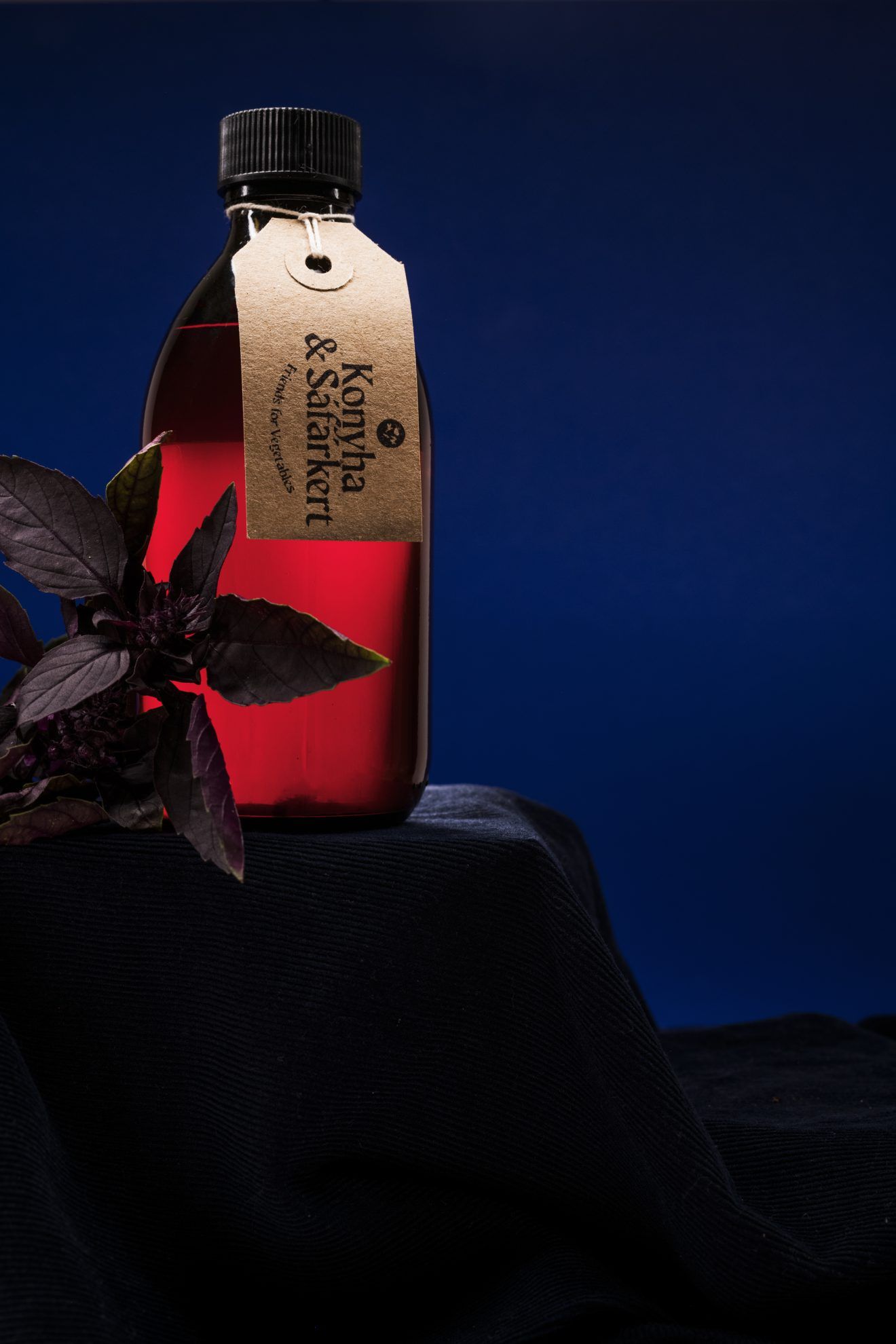
The pilot of the project took place at a 5 course vegan dinner, organized with the not so hidden goal of showcasing the potential of Sáfárkert’s vegetables and Marci’s virtuosity – with huge success. The project did not continue not only because of the epidemic, but also because these jars were about this year and this summer, and so once the last item is purchased, this chapter of the story will end. The duo is more busy than ever these days, as they are continuously experimenting and brainstorming about novelties, may it be hawthorn jam or the possible ways of using barberry.
You can buy the products of the Konyha x Sáfárkert collaboration in Konyha, as well as in Budapest Bagel’s store in Buda, until stocks last. Nowadays Marci can be found behind the bento boxes of the freshly opening 101Bistro as well as the second round of the Etesd a dokit! (Feed the Doc!) project, but unfortunately you’ll have to wait for Norbi’s fantastic veggie boxes until next spring.
Photos: Géza Talabér
Sáfárkert | Facebook | Instagram
Konyha | Web | Facebook | Instagram

Old barn transformed into a space for art | Milan Mijalkovic

Organizing professional fashion photoshoots in a matter of days | Random Shooting Day
